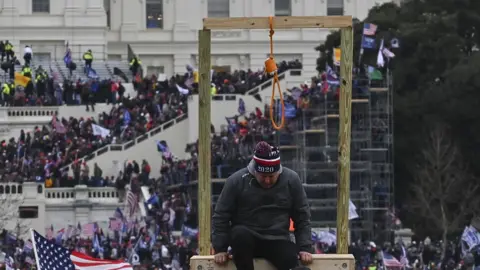| Introduction | Riots in the USA have sparked national conversations about justice, equality, and the very fabric of our democracy. These explosive events are often rooted in deeper societal issues, reflecting the frustrations and anger of marginalized communities. In this article, we’ll dive into the history, causes, and impacts of riots across the nation, shedding light on what drives these moments of unrest. |
| Historical Context of Riots in the USA | Understanding the landscape of riots requires a look at history and the patterns that have emerged over time. |
| Notable Historical Riots | From the Watts riots in the 1960s to the Stonewall uprising, notable riots have often highlighted the struggles of different communities and their fight for rights and recognition. Each event tells a story of pain, resistance, and the call for change. |
| Patterns and Trends Over Time | By examining historical trends, we can see how social movements and economic conditions intertwine with periods of unrest, indicating that nmweek.com often arise from the same systemic issues throughout history. |
| Key Causes of Recent Riots | In recent years, certain catalysts have emerged, igniting widespread riots and protests across the country. |
| Social Injustice and Racial Tensions | Many recent riots stem from a long history of social injustice and racial tensions. The demand for equality and an end to systemic racism continues to fuel anger and protests. |
| The Role of Police Violence | Incidents of police violence have been pivotal in triggering riots. The deaths of individuals like George Floyd have sparked outrage, leading to large-scale protests that sometimes escalate into riots. |
| Economic Disparities | Economic hardship, especially in marginalized communities, can act as a powder keg for riots. When people struggle to make ends meet, frustration often boils over. |
| Political Polarization | The current political climate, marked by division and unrest, can amplify tensions, causing individuals to feel their only option is to take to the streets in anger. |
| Major Recent Riots | Let’s take a closer look at some significant riots that have shaped recent events in the USA. |
| The George Floyd Protests | The protests following George Floyd’s death in 2020 were not just about one incident; they represented a broader demand for justice, equality, and police reform, leading to riots in many cities. |
| Capitol Riot of January 6, 2021 | The Capitol riot marked a dramatic moment in American history, where a group of individuals stormed the seat of democracy, driven by false claims of election fraud. This event has led to ongoing discussions about political extremism and accountability. |
| The Role of Media in Riot Coverage | Media plays a significant role in shaping public perception of riots. |
| Framing and Bias in Reporting | The way riots are reported can influence how the public perceives the motives and actions of the individuals involved. Some media outlets frame riots as violent outbreaks, while others highlight the underlying issues prompting the unrest. |
| Impact of Social Media | Social media platforms have changed the game, providing real-time updates and amplifying voices that may not have been heard otherwise. However, misinformation can also spread quickly, complicating narratives around riots. |
| Law Enforcement’s Response to Riots | How law enforcement responds to riots can either de-escalate the situation or exacerbate tensions. |
| Tactics Used by Police | Police often utilize crowd control tactics during riots, which can include tear gas, rubber bullets, and physical barriers. These methods can lead to further anger and escalation. |
| Controversial Measures | The use of controversial measures, such as curfews and militarized responses, has been criticized for increasing the perception of hostility between law enforcement and communities. |
| Community Relations Post-Riot | After riots, rebuilding trust between communities and law enforcement becomes crucial. Open dialogue and community engagement are vital for healing. |
| Aftermath of Riots | The aftermath of riots often leaves lasting impacts on communities and policies. |
| Policy Changes and Reforms | In the wake of significant riots, policy changes may occur, such as police reforms and community initiatives aimed at addressing the root causes of unrest. |
| Community Healing and Dialogue | Communities often engage in discussions to heal and address underlying issues. This healing process can lead to better understanding and collaboration among residents, leaders, and law enforcement. |
| Conclusion | Riots in the USA serve as powerful indicators of societal frustration and demand for change. They challenge us to confront uncomfortable truths about inequality and injustice. As we move forward, understanding the roots of these events is essential for fostering a more equitable society. |

